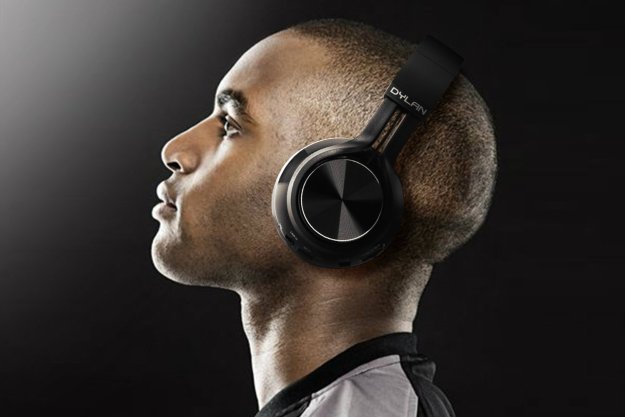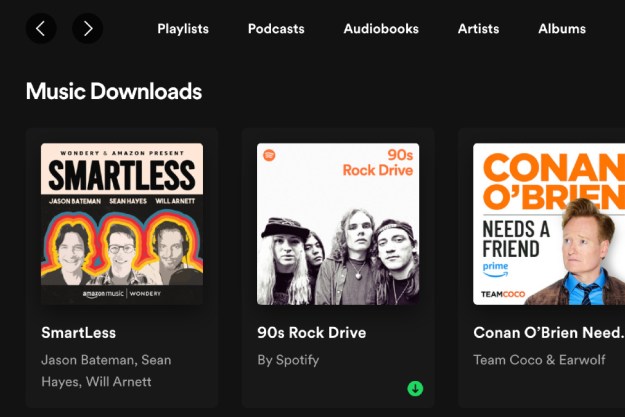
Put on your headphones and its a DJ battle and epic dance party. Take them off, and it’s as quiet as an ice cream social.
Downstairs in Toshi’s Living Room, a building looming in the shadow of the Empire State Building, a loud and somewhat cheesy live music act is just heating up. The bright red couches are filled with people holding martinis, looking bored, blissful, or a combination of the two. Nobody talks — not that they could hear each other if they tried. This is your typical party: loud and noisy. But just beyond the deafened crowds at Toshi’s, is a sign for Quiet Events. If it’s too loud down here, just come upstairs, the sign says.
Right by the elevators, sits a table full of headphones and a a few eager people checking guests into the “silent disco” in the top-floor penthouse. Up in the penthouse, everyone is wearing headphones — some with green lights, others with blue, and even red. Even the three DJs each have a color, but the whole place is oddly quiet.
What’s going on here?” you might ask. Well, it’s a quiet party. Put your headphones on, and the music starts.
Quiet clubbing is like going to a disco, but with headphones
The phenomenon is known as quiet clubbing. It’s a growing trend in big cities where noise ordinances and other limitations have encouraged club-goers to get creative. In New York City, thousands of people head out to silent discos each week, put on their headphones, and just dance. There are several companies organizing these parties all over the country, but one of the most popular ones in NYC is Quiet Events.
Will Petz founded the company two and a half years ago, shortly after he discovered quiet clubbing while on a cruise with his family.
“When I first heard about it, I thought it was the stupidest thing in the world. But once you experience it, it’s cool.”
When he got back to New York, Petz looked for another silent disco or clubbing event, but found none. An entrepreneur at heart, he decided to start his own. It started out with just Petz, a few friends, and some headphones. Now, two and a half years later, Quiet Events brings in as many as 600 people a night in NYC, has 3,000
Petz holds stationary silent discos in beer gardens, rooftops, and bars around New York City. He even invites pub crawlers to mobile parties, where headphone-wearing folk silently transverse the city, moving from subway cars to ferries, and the roller coasters at Coney Island.
Many people think quiet clubbing sounds like a stupid idea at first, but Petz says he loves to challenge those people to try it. In the end, many of them end up seeing things his way.

“The first thing you think of is the antisocial guy on the train with his headphones on,” Petz said. “But it’s not like that at all. It’s actually really social. When you put the
Related: Best headphones for under $200
We went to a Quiet Event ourselves and while the music may blare through the headphones, the second you take them off it’s eerily quiet. You can hear people holding lengthy conversations, singing along to music only they can hear, and breaking into what seem to be spontaneous dance routines with those who are on the same station.
You control the music and the conversation
Most Quiet Events have two or three DJs who play different music throughout the night. Each DJ is assigned a frequency and a color, like green, blue, or red, so that he can see how many people are on his station. And you can see, very easily. Each person’s headphones light up with the color of the station they’re listening to, leading to an odd form of peer pressure. You almost have a Facebook-style “fear of missing out” feeling when you are on a differently colored station from the crowd. Sometimes it seems like everyone is listening to the same DJ, but at other times it can be pretty well mixed. If a DJ plays a bad song, the crowd will often revolt and switch over to another station. It lays bare our natural instincts to both rebel and follow the crowd.
“Here, all you have to do is take off the headphones and talk to people.”
“You have more choice,” Petz said. “You control the DJ. You control the music. It’s about what you like. If a DJ starts playing rap and you hate it, you switch stations. It’s less about what the DJs like and more about what you like.”
At regular clubs, DJs can get cocky and stop paying attention to the crowd, Petz explains, but that doesn’t happen at silent discos because the DJ is more aware of the crowd’s reaction to his music choices.
Resident DJ and personal friend of Petz Eziequiel Ramos told us that quiet events are his favorite because he likes the friendly competition that occurs between the different DJs.
“I’ve been DJing for over 15 years and the last 2 years doing this has been my favorite thing,” he said. “You see what the other DJs are playing and if you see everybody nodding the other color, you’re like, ‘I gotta get the crowd back.’ It’s a fun way to be competitive.”

Of course, the first time Ramos DJed for Quiet Events, it took him a while to adjust to the concept.
Related: Rave while you bathe with this LED-equipped shower speaker
“It was a little weird at first,” he said. “But I think that’s everybody’s reaction. It’s like, ‘What is this?’ but then you put the headphones on and you see everyone having a good time, singing, and dancing. You ease into to and get more comfortable as the night goes on. People are really getting into it.”
Quiet events bring people together
Back up in the penthouse at Toshi’s, a group of people break out into song, singing “I don’t care — I love it!” while I chat with Efthimia Johanides and her friend Tiffany Torres, who are attending Quiet Events’ quiet club for the first time. Johanides heard about the event from a co worker and was excited to go to another silent disco, having attended similar events during college at UCLA.
The only people who didn’t start dancing were those without headphones.
“The venue is great and this one’s different,” she added. ” It’s nice to be on a rooftop in the summer with a great view of the city. Plus, I’m really digging this DJ.”
Her friend Torres agreed, “This is my first one. It’s cool — it’s really different. I’d definitely be to another one. I’d never heard of it until she told me about it.”
As we spoke, everyone on the green station suddenly broke out into a rendition of “Cotton-Eyed Joe,” executing the same routine that they’d probably all danced in high school. The only people who didn’t start dancing were those without headphones and the few who were listening to the blue station. A few of them switched over to join the dance.
The spirit of quiet events is contagious, Petz explains.
“It’s a big party that only you are invited to,” he said. “People are in their own zone and everyone can enjoy their own music, but it’s all about engaging people. Sometimes, when we do our mobile parties, flash mobs break out. So you’ll have, like, 100 people hailing a taxi at the same time, giving each other high fives, or flash tipping street performers. It’s just good fun.”
After a night of great music and good conversation, we have to agree.
[Some photos courtesy of Quiet Events]
Editors' Recommendations
- Bluetooth headphones have been on planes for 10 years, so why do I still need a cable?
- Bose’s new noise-canceling headphones make it easier for Alexa to hear you




